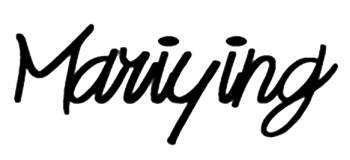The Essential Guide to Choosing the Perfect Binder for Your DIY Notebook
When crafting a custom notebook, especially if you’re building something unique and personal, the right binder is key to the final product. A binder isn't just a functional piece; it’s an element that dictates how the notebook feels, how pages turn, and how the structure holds up over time. As a seasoned DIY enthusiast, I’ve come to understand that binders are as diverse as the projects they complete, and picking the right one can be transformative.
Here’s a deep dive into binder options, with everything you need to make the best choice for your DIY notebook.
1. Understanding the Two Main Types: Round and D-Ring Binders
First up, let’s clarify the basic styles: Round Ring and D-Ring.
-
Round Ring Binders are the most traditional and recognizable style. They’re straightforward and visually appealing. Round rings work beautifully for smaller books or journals with thinner paper, making them an ideal choice for a minimalist look or when page capacity isn’t the main priority.
-
D-Ring Binders—here’s where things get interesting. D-rings have a flat side that allows pages to stack more evenly, meaning they can hold more sheets without adding bulk to the spine. This style is sturdy, durable, and essential if you plan to add multiple thick pages or inserts. The pages sit flat and stay organized, giving you a neater look and smoother page-turning experience.
Tip: If you’re planning a heavily-used, multi-functional notebook—like one for mixed media or as a planner with dividers—a D-ring binder is your best bet.
2. Consider Page Size and Spacing Requirements
No one wants to finish their handmade journal only to find that the binder doesn’t align with the pages! This step is simple but crucial.
- For A5, A6, or other standardized page sizes, pre-measure the distance between holes. Most binders come in set hole-spacing configurations, so knowing your page size can help you avoid a frustrating mismatch.
- Custom page size? Not a problem! Many binders are adjustable or come in varieties with custom-spacing options.
To get the perfect match, use a ruler and carefully measure both the binder’s prongs and your page punch settings. Being meticulous here will make the binding process smooth, and it’s worth it for that professional finish.
3. Binder Material: Durability and Aesthetic Matter
The material of your binder’s rings and spine is as important as the fabric or paper you choose for the cover. Here’s why:
-
Metal Binders are classic and sturdy, often lasting through years of page-flipping without bending or breaking. If you’re after durability and a sleek, polished look, metal is a solid choice.
-
Plastic Binders can add a bit of flexibility, and they’re lighter in weight, which can be handy if you’re planning a thicker, more page-heavy notebook. However, they may wear out faster with heavy use.
For an eco-friendly option, some crafters choose recycled plastic or upcycled metal binders. As always, balance your aesthetic vision with the function and intended lifespan of your project.
4. Customization Potential: Loose-Leaf Freedom
If you’re someone who loves the flexibility to rearrange or remove pages, look for binders that support easy customization. Loose-leaf rings with snap closures, for example, allow you to add and remove sheets as you wish.
Loose-leaf rings are a great option for project-based notebooks, as you can swap out specific sections without affecting the entire structure. Many crafters like them for mixed-media journals or scrapbooks where elements are often added or removed.
5. Finding the Right Ring Size: Capacity Matters
Each binder has a maximum capacity, and exceeding it can cause structural issues or damage your pages. Here’s a quick guideline:
- 1-inch rings: Great for thin notebooks, light sketchbooks, or mini diaries. Expect to fit around 150-175 sheets, depending on paper thickness.
- 1.5-inch rings: Versatile and functional, this size holds roughly 250 pages. Perfect for planners or personal notebooks.
- 2-inch rings and beyond: These rings handle around 300+ sheets, ideal for large projects, like recipe books, full journals, or ongoing diaries.
Remember: while going for the largest ring size may seem tempting, oversized rings on a small book can feel clunky. Choose a size that balances your page count with ease of use.
6. Binding Techniques and Installation
For DIY novices, installing a binder might feel intimidating, but it’s simpler than it looks:
- Start by carefully aligning your binder with the cover spine. For accuracy, use a ruler or template.
- Punch holes through your pages and covers if necessary, ensuring they align perfectly with the rings.
- Secure the binder in place by using screws or snap attachments, depending on the binder type. Double-check the alignment, as any off-center placement can lead to frustration later.
Tip: If you’re experimenting with different cover materials, try a practice run with scrap material to ensure your binder will sit comfortably.
7. Finishing Touches: Personalization and Polish
Now that your binder is installed, it’s time for the fun part—personalizing it! Add ribbon, labels, or tags for easy organization, or glue down extra decorative elements on the cover. Think about what would make your notebook uniquely yours.
Adding these small details makes the final piece even more special and gives a polished, professional feel to your handmade notebook.
Conclusion
Choosing the right binder is a vital step in creating a notebook that not only looks great but also lasts and feels functional. Taking the time to understand ring types, material options, and installation techniques can transform a DIY project into a cherished keepsake. Dive into the details, embrace the process, and enjoy the satisfaction of a perfectly bound, fully custom notebook!
